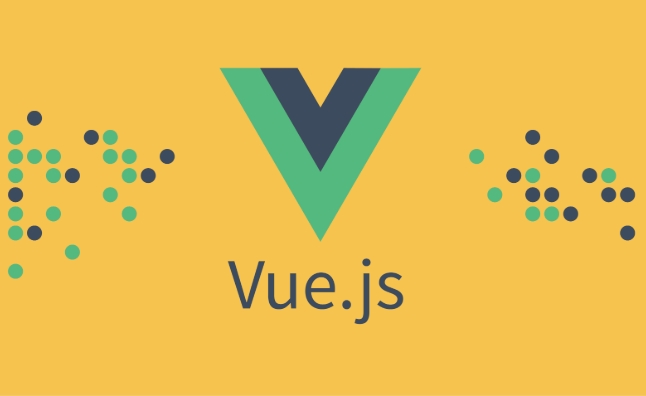What are the main benefits of using Nuxt.js over standard Vue SSR?
Nuxt.js simplifies setup with file-based routing, automatic code splitting, and pre-configured tools, eliminating the need for manual Webpack and Vue Router configuration required in standard Vue SSR. 2. It supports SSR, SSG, and hybrid rendering out of the box, enabling flexible deployment strategies with minimal configuration, unlike Vue SSR which requires custom implementations for each mode. 3. Enhanced developer experience includes HMR on both server and client, built-in error handling, middleware support, and a modular plugin system that streamlines common tasks. 4. SEO and performance optimizations such as automatic meta tag management, resource prefetching, and image optimization are built-in, reducing the manual effort needed in vanilla Vue SSR. 5. A unified, scalable project structure with clear directory conventions and integrated API routes via Nitro promotes consistency and team collaboration, making Nuxt the more efficient and maintainable choice for production-grade, content-driven applications.

Using Nuxt.js over standard Vue SSR offers several practical advantages that streamline development, improve performance, and enhance developer experience—especially for production-grade applications. Here are the main benefits:

1. Simplified Setup and Convention over Configuration
With standard Vue SSR, you need to manually configure Webpack, set up server entry points, manage client and server bundle rendering, and handle routing via Vue Router. This can become complex and time-consuming.
Nuxt.js abstracts all of this away with a file-based routing system and built-in conventions:

- Pages in the
pages/directory automatically become routes - Automatic code splitting
- Pre-configured Webpack and Babel
- Built-in support for Vuex, Vue Router, and Vue Meta
This means you can start building features right away without spending hours on boilerplate configuration.
2. Out-of-the-Box SSR, SSG, and Hybrid Rendering
Nuxt.js supports multiple rendering modes out of the box:

- Server-Side Rendering (SSR) for dynamic content and SEO
-
Static Site Generation (SSG) via
nuxt generate, ideal for blogs, docs, or marketing sites - Hybrid static dynamic rendering (in Nuxt 3 ) where you can mix static and SSR pages in the same app
Standard Vue SSR typically requires custom setup for each of these, while Nuxt provides CLI commands and configuration options to switch or combine them easily.
3. Better Developer Experience (DX)
Nuxt improves DX with:
- Hot Module Replacement (HMR) on both client and server
- Built-in error handling and debugging tools
- Middleware support for route-level logic (auth, redirects, etc.)
- Modular plugin system for extending functionality
It also has a rich ecosystem of modules (e.g., @nuxtjs/axios, @nuxtjs/tailwindcss) that integrate common tools with minimal config.
4. SEO and Performance Optimization Built-In
Nuxt makes it easier to optimize for search engines and performance:
- Automatic
<meta>and<title></title>management viauseHead()orhead()in pages - Preloading and prefetching resources intelligently
- Image optimization (especially with
@nuxt/imagein Nuxt 3) - Faster Time to Interactive (TTI) due to optimized hydration and payload handling
In standard Vue SSR, you’d need to manually wire up meta tags, manage critical CSS, and optimize payloads—tasks Nuxt handles automatically.
5. Unified Architecture for Universal Apps
Nuxt enforces a structured project layout that scales well:
- Clear separation of concerns (
pages/,components/,layouts/,middleware/, etc.) - Support for API routes (via Nitro server in Nuxt 3), enabling full-stack applications
- Unified state management with Pinia or Vuex
This structure reduces decision fatigue and makes team collaboration easier compared to a custom Vue SSR setup where architecture can vary widely.
In short, while Vue SSR gives you full control, Nuxt.js gives you speed, structure, and scalability with far less effort. For most projects—especially content-driven or SEO-sensitive apps—Nuxt is the more efficient and maintainable choice.
The above is the detailed content of What are the main benefits of using Nuxt.js over standard Vue SSR?. For more information, please follow other related articles on the PHP Chinese website!

Hot AI Tools

Undress AI Tool
Undress images for free

Undresser.AI Undress
AI-powered app for creating realistic nude photos

AI Clothes Remover
Online AI tool for removing clothes from photos.

Clothoff.io
AI clothes remover

Video Face Swap
Swap faces in any video effortlessly with our completely free AI face swap tool!

Hot Article

Hot Tools

Notepad++7.3.1
Easy-to-use and free code editor

SublimeText3 Chinese version
Chinese version, very easy to use

Zend Studio 13.0.1
Powerful PHP integrated development environment

Dreamweaver CS6
Visual web development tools

SublimeText3 Mac version
God-level code editing software (SublimeText3)
 Free entrance to Vue finished product resources website. Complete Vue finished product is permanently viewed online
Jul 23, 2025 pm 12:39 PM
Free entrance to Vue finished product resources website. Complete Vue finished product is permanently viewed online
Jul 23, 2025 pm 12:39 PM
This article has selected a series of top-level finished product resource websites for Vue developers and learners. Through these platforms, you can browse, learn, and even reuse massive high-quality Vue complete projects online for free, thereby quickly improving your development skills and project practice capabilities.
 What are Vue lifecycle hooks? Name a few and explain their use cases.
Jul 24, 2025 am 12:08 AM
What are Vue lifecycle hooks? Name a few and explain their use cases.
Jul 24, 2025 am 12:08 AM
The life cycle hook of the Vue component is used to execute code at a specific stage. 1.created: Called immediately after the component is created, suitable for initializing data; 2.mounted: Called after the component is mounted to the DOM, suitable for operating the DOM or loading external resources; 3.updated: Called when the data update causes the component to be re-rendered, suitable for responding to data changes; 4.beforeUnmount: Called before the component is uninstalled, suitable for cleaning event listening or timer to prevent memory leakage. These hooks help developers accurately control component behavior and optimize performance.
 Example of a pagination component in Vue
Jul 26, 2025 am 08:49 AM
Example of a pagination component in Vue
Jul 26, 2025 am 08:49 AM
To implement reusable Vue paging components, the following key points need to be clarified: 1. Define props including the total number of lines, the number of lines per page and the current page number; 2. Calculate the total number of pages; 3. Dynamically generate the displayed page number array; 4. Process the page number click event and pass it to the parent component; 5. Add styles and interaction details. Receive data through props and set default values, use the computed attribute to calculate the total number of pages, use the method to generate the currently displayed page number array, render buttons in the template and bind click events to trigger the update:current-page event, listen to the event in the parent component to update the current page number, and finally highlight the current page number through CSS and control the button status to improve the user experience.
 How to use v-model on a custom component?
Jul 14, 2025 am 01:02 AM
How to use v-model on a custom component?
Jul 14, 2025 am 01:02 AM
To enable v-model in Vue custom component, you need to: 1. Declare modelValueprop; 2. Notify the parent component data changes through $emit('update:modelValue'). For example, bind modelValue in input and trigger an event. If you need to support multiple v-models (Vue3), you can use naming methods such as v-model:title and declare the corresponding prop and emit. When maintaining variables internally, it is recommended to use data or computed for intermediate layer synchronization to avoid directly modifying props.
 vue free finished product resource entrance vue free finished product website navigation
Jul 23, 2025 pm 12:42 PM
vue free finished product resource entrance vue free finished product website navigation
Jul 23, 2025 pm 12:42 PM
For Vue developers, a high-quality finished project or template is a powerful tool to quickly start new projects and learn best practices. This article has selected multiple top Vue free finished product resource portals and website navigation for you to help you find the front-end solutions you need efficiently, whether it is a back-end management system, UI component library, or templates for specific business scenarios, you can easily obtain them.
 How to test asynchronous actions in Vuex?
Jul 14, 2025 am 01:55 AM
How to test asynchronous actions in Vuex?
Jul 14, 2025 am 01:55 AM
Testing asynchronous operations in Vuex requires the following steps: 1. Use done() or return Promise to ensure that the test waits for the asynchronous operation to complete; 2. Use tools such as jest.spyOn to simulate API calls to avoid dependence on the real interface; 3. Verify whether the error handling logic is working properly; 4. Pay attention to the correct use of async/await to prevent uncaught exceptions. These methods can effectively ensure the reliability and testability of asynchronous code.
 How to use .env files in a Vue project?
Jul 14, 2025 am 01:57 AM
How to use .env files in a Vue project?
Jul 14, 2025 am 01:57 AM
The method of using .env files in Vue projects is as follows: 1. Create .env files in the project root directory and add corresponding files according to the environment, such as .env.development, .env.production, etc.; 2. Define variables with VUE_APP_ as the prefix in the file, such as VUE_APP_API_URL=https://api.example.com; 3. Access variables through process.env.VUE_APP_API_URL in the code, and can also be used for dynamic configuration in vue.config.js; 4. Automatically load corresponding environment variables when running different commands, such as npmrunserve loading development environment variables.
 How to use $ref compiler macro?
Jul 19, 2025 am 01:27 AM
How to use $ref compiler macro?
Jul 19, 2025 am 01:27 AM
$ref is a keyword used to reference other parts of a JSON or YAML configuration file or external file structure, commonly found in JSONSchema and OpenAPI specifications. 1. The basic syntax of $ref is {"$ref":"path"}, which can point to the internal inside of the current document (such as #/definitions/User) or external files (such as user-schema.json#/definitions/User). 2. Usage scenarios include reusing schemas, splitting large files, and organizing code structures. 3. Note that the path must be correct, avoid circular references, ensure that external files are accessible, and avoid excessive nesting.







